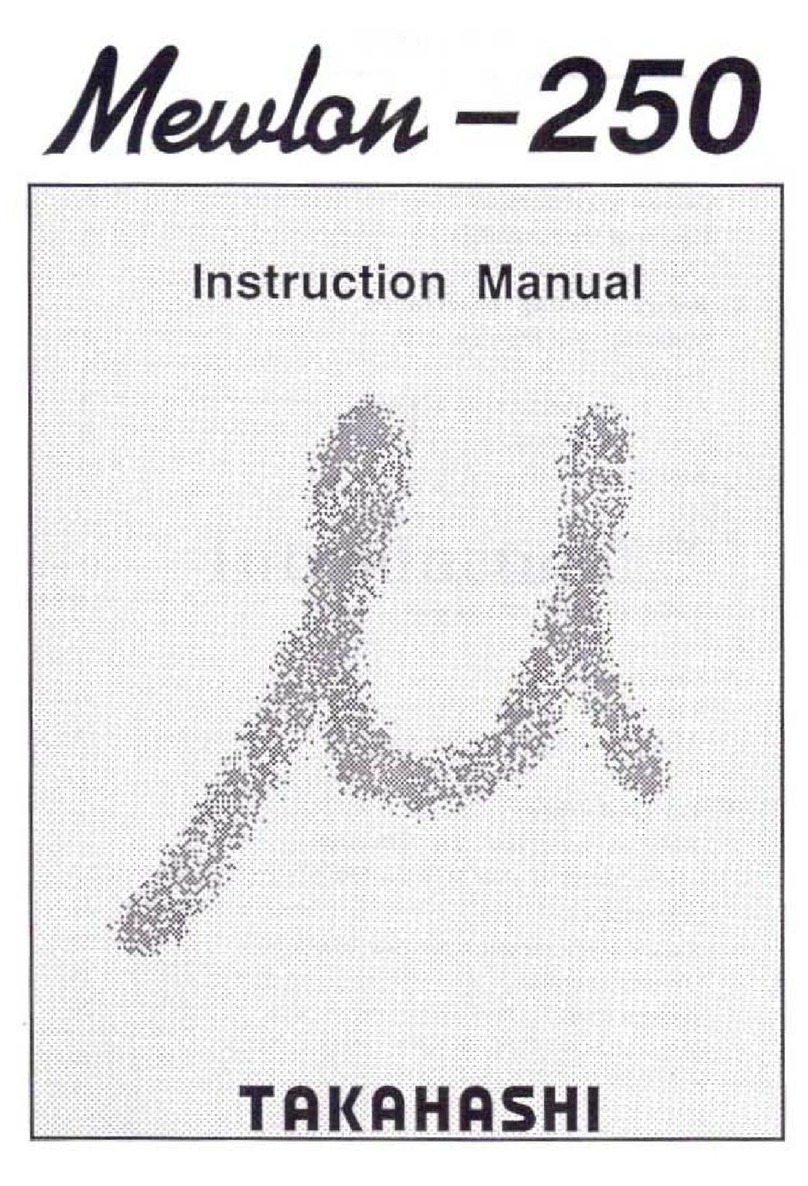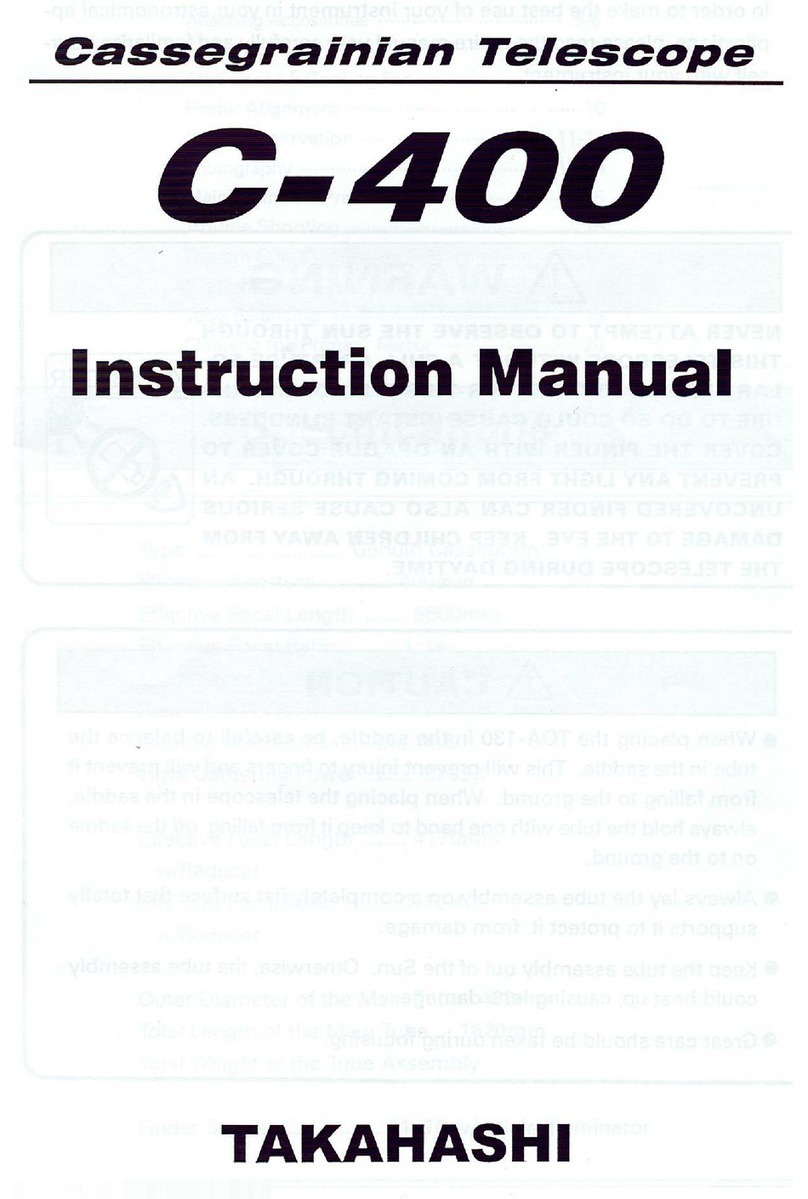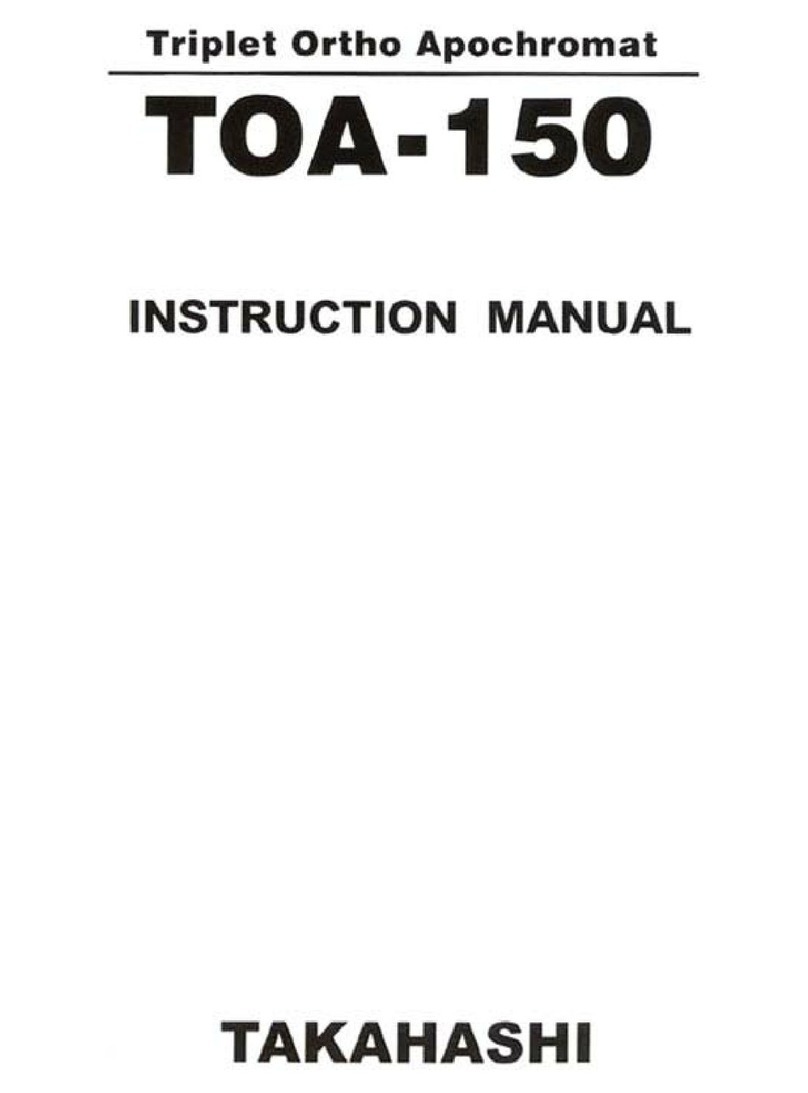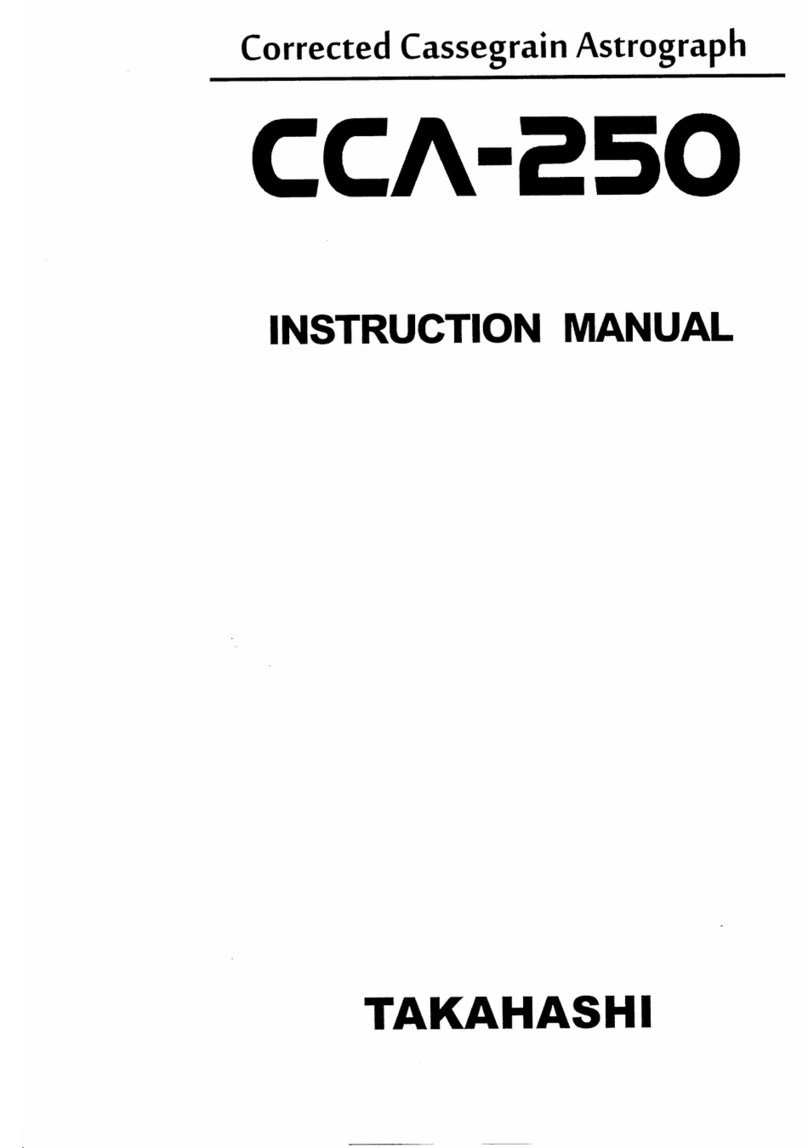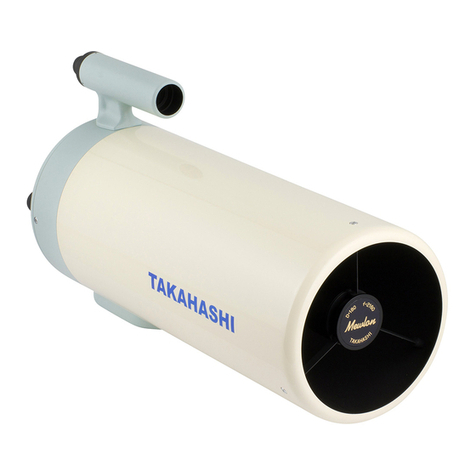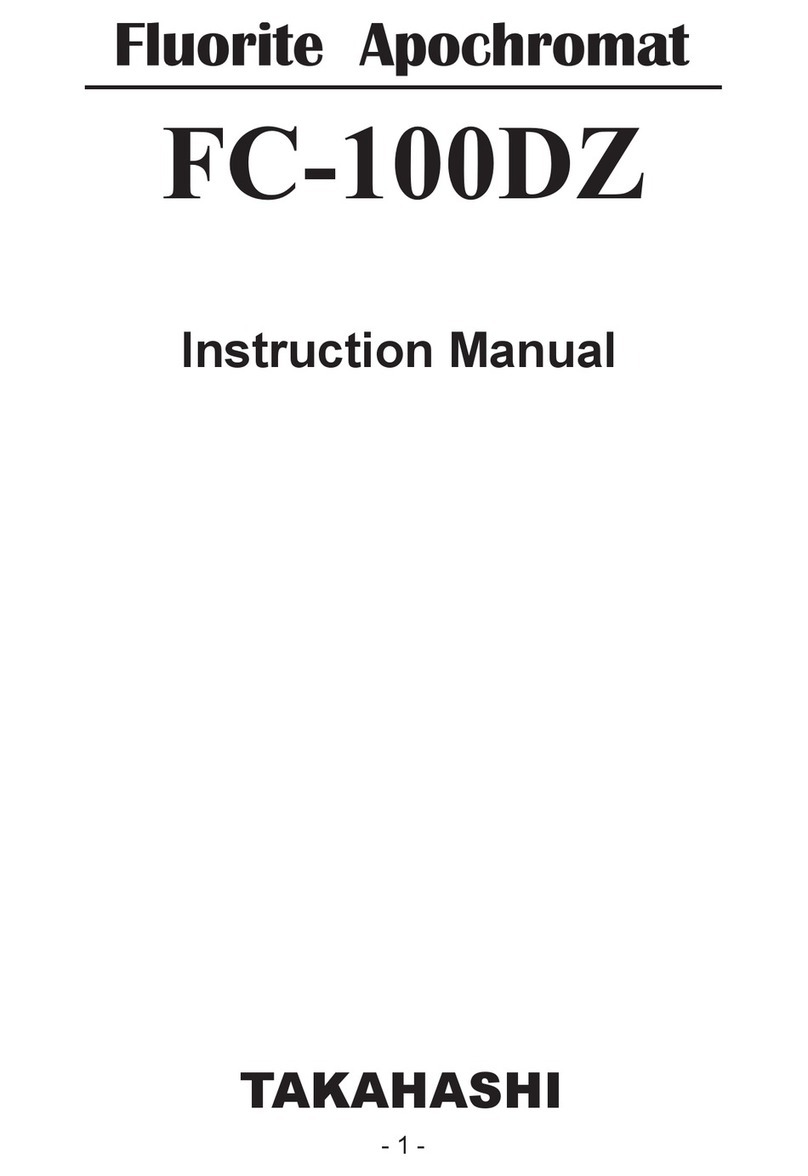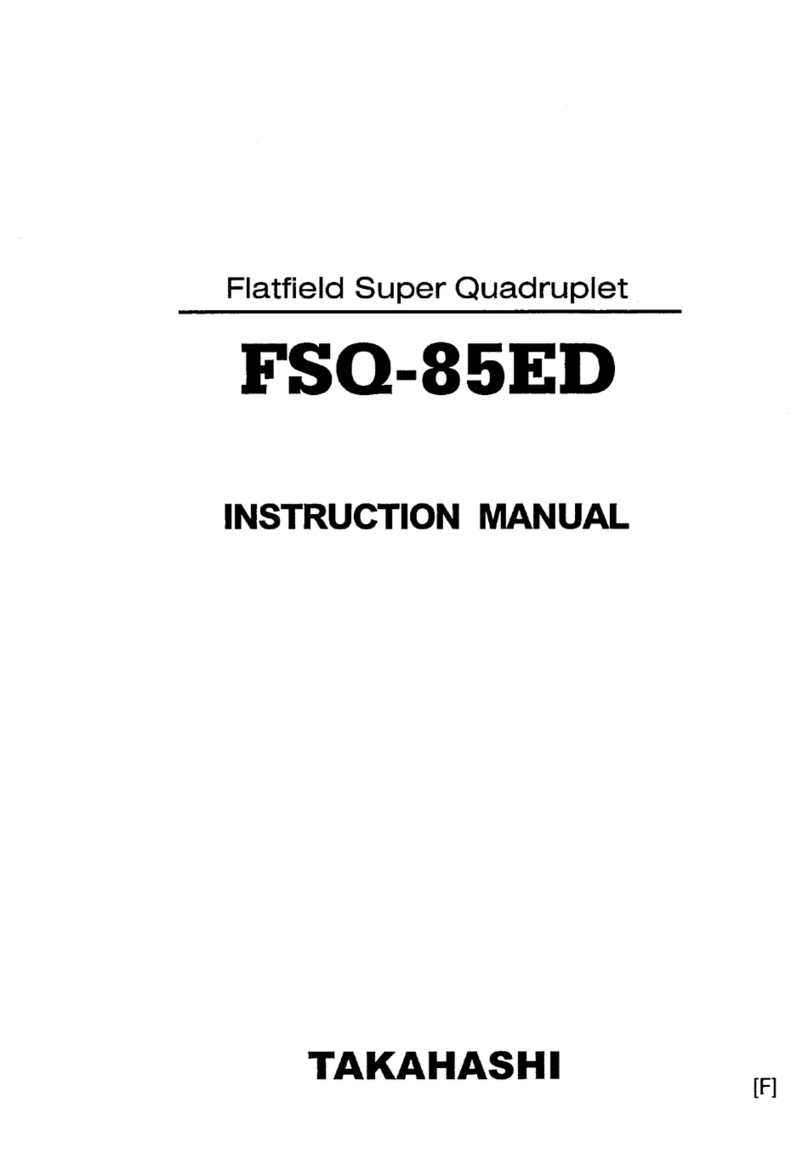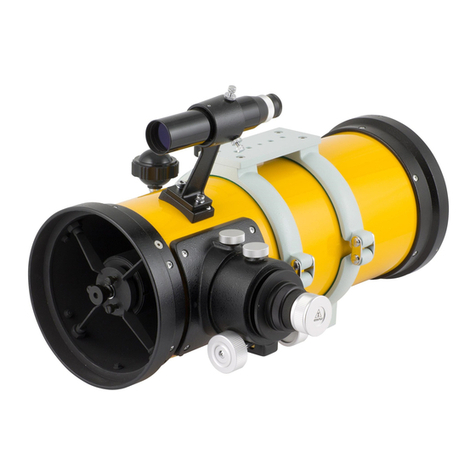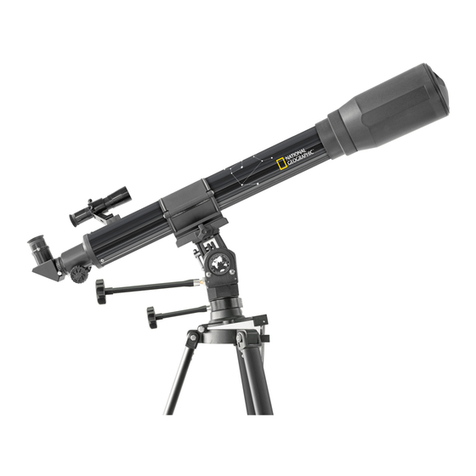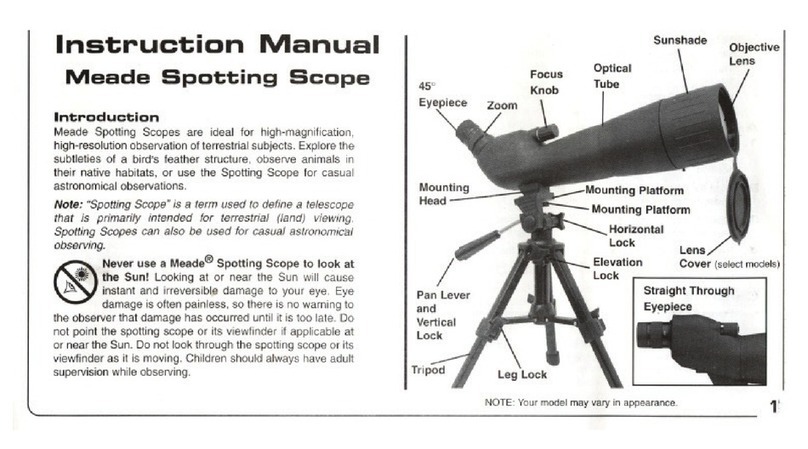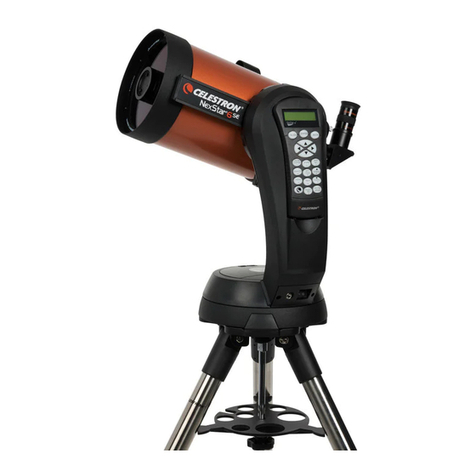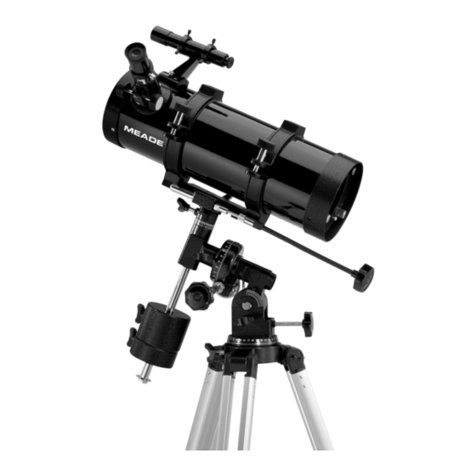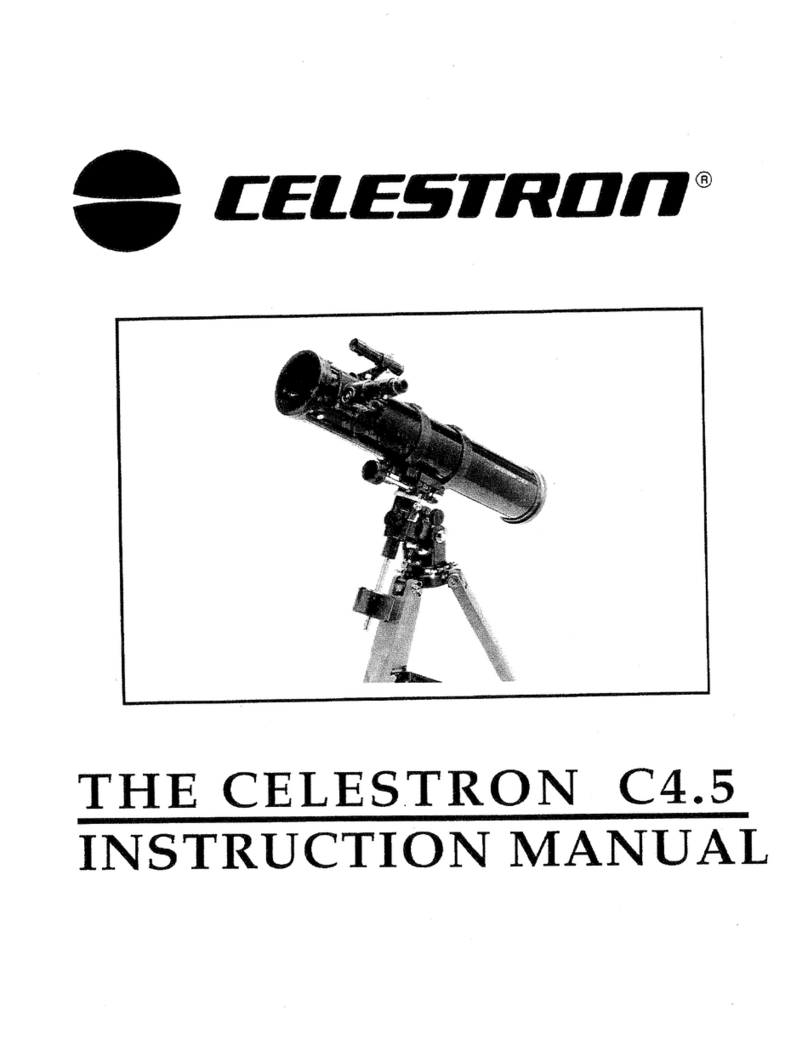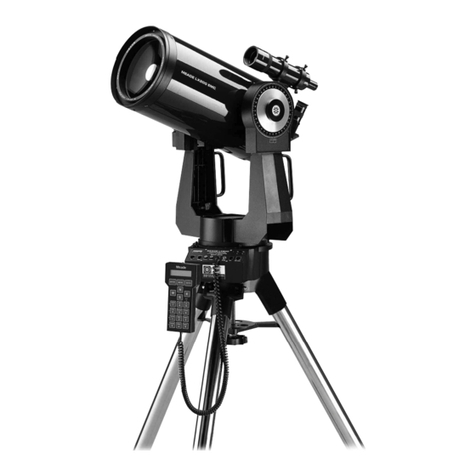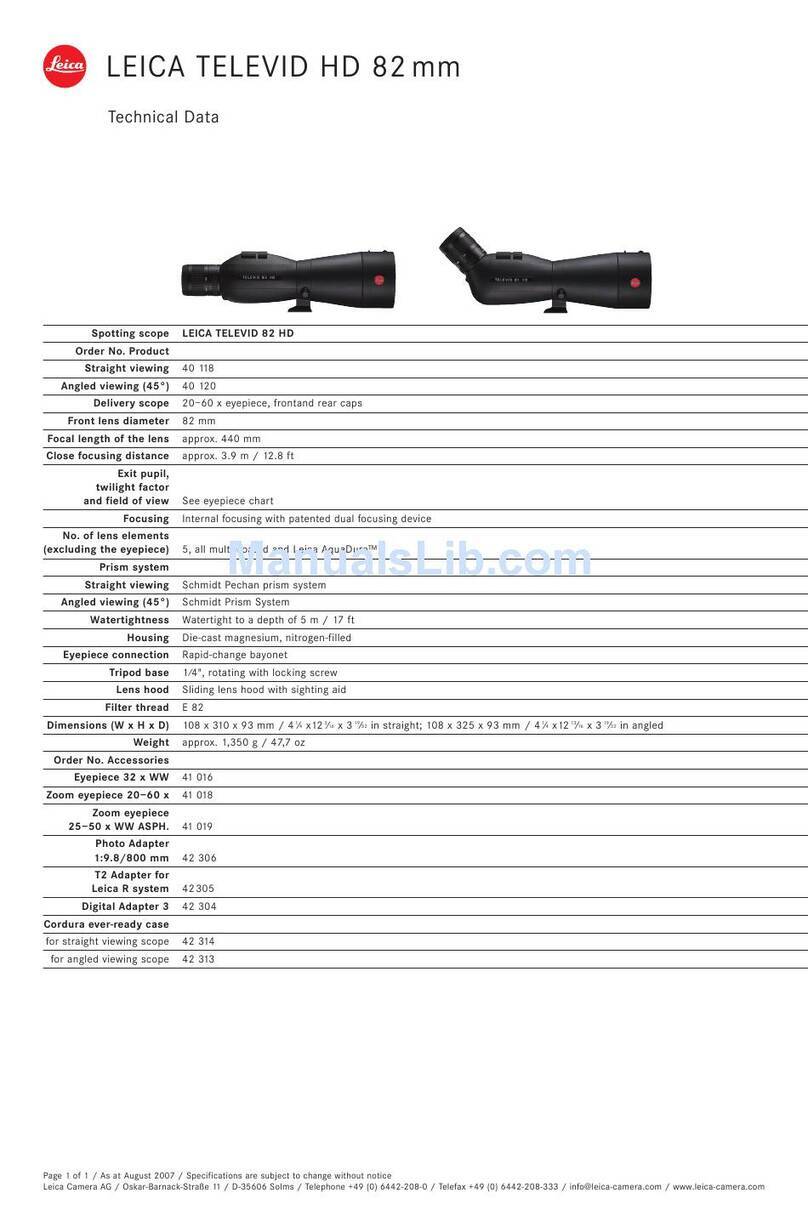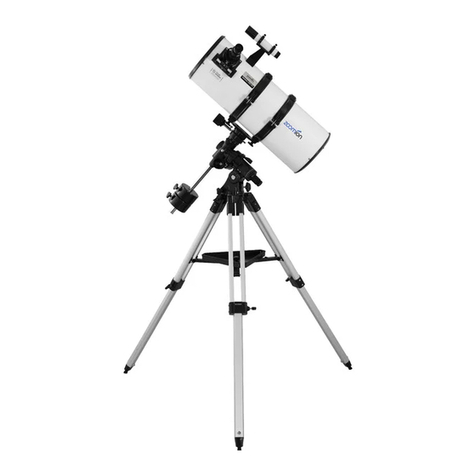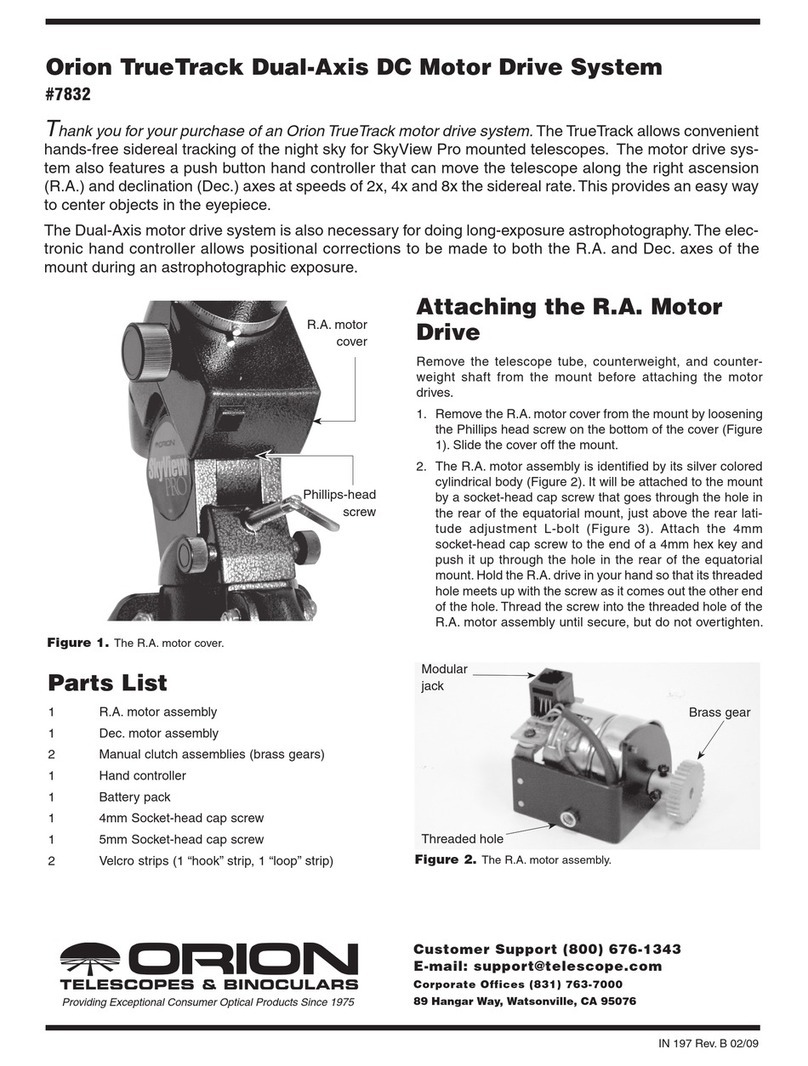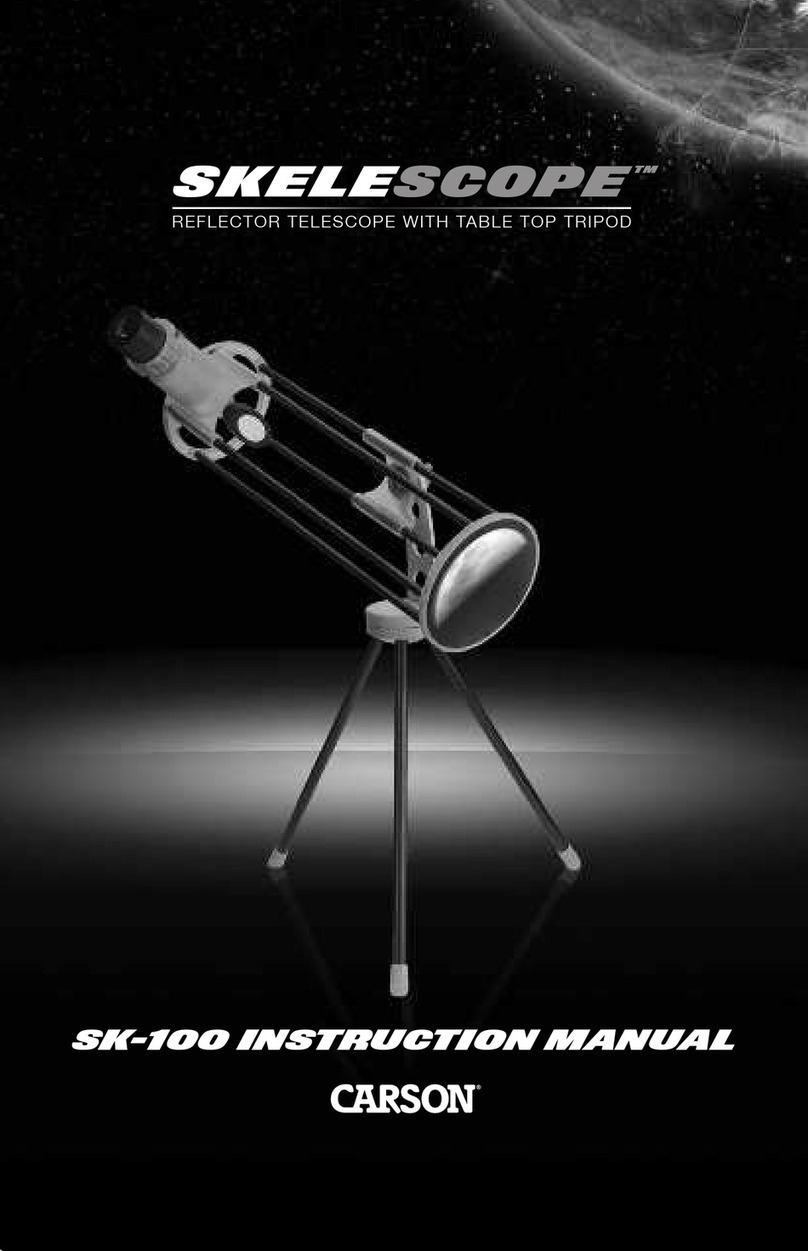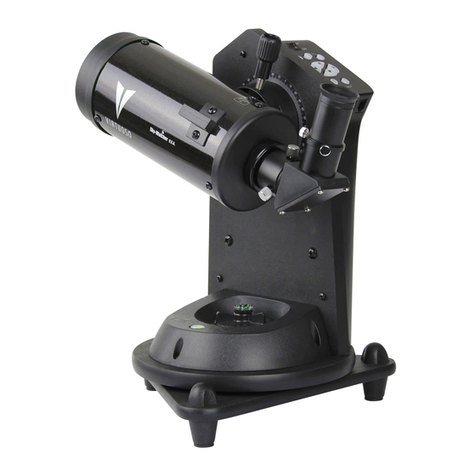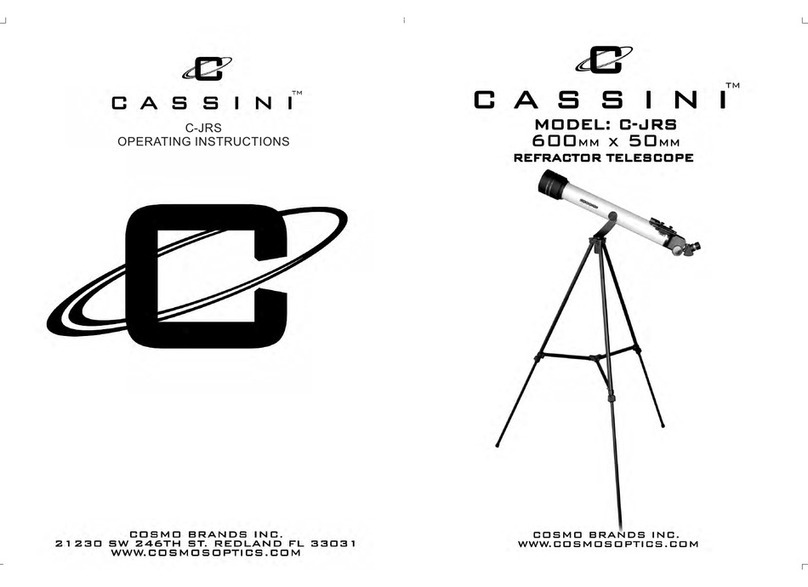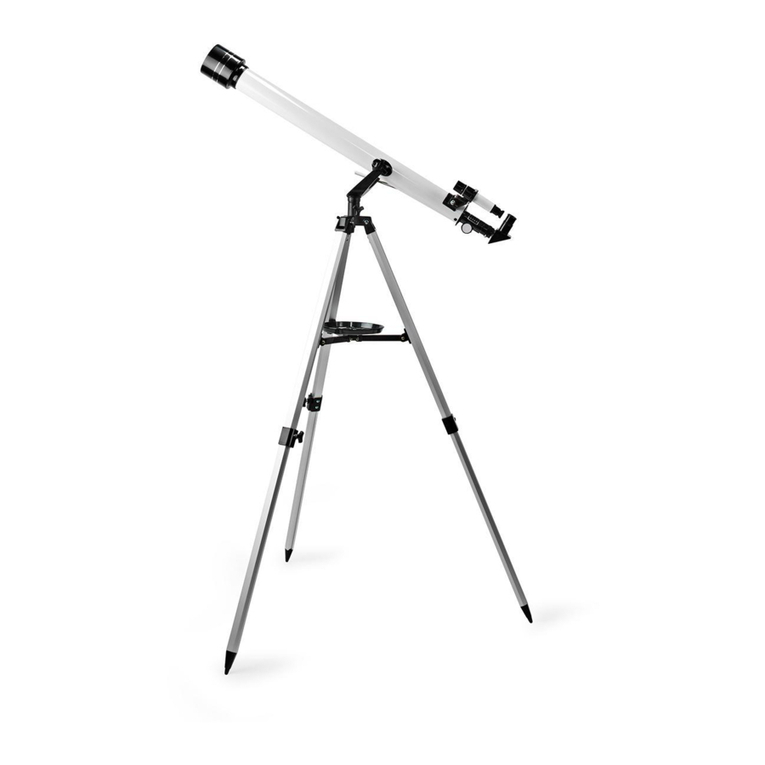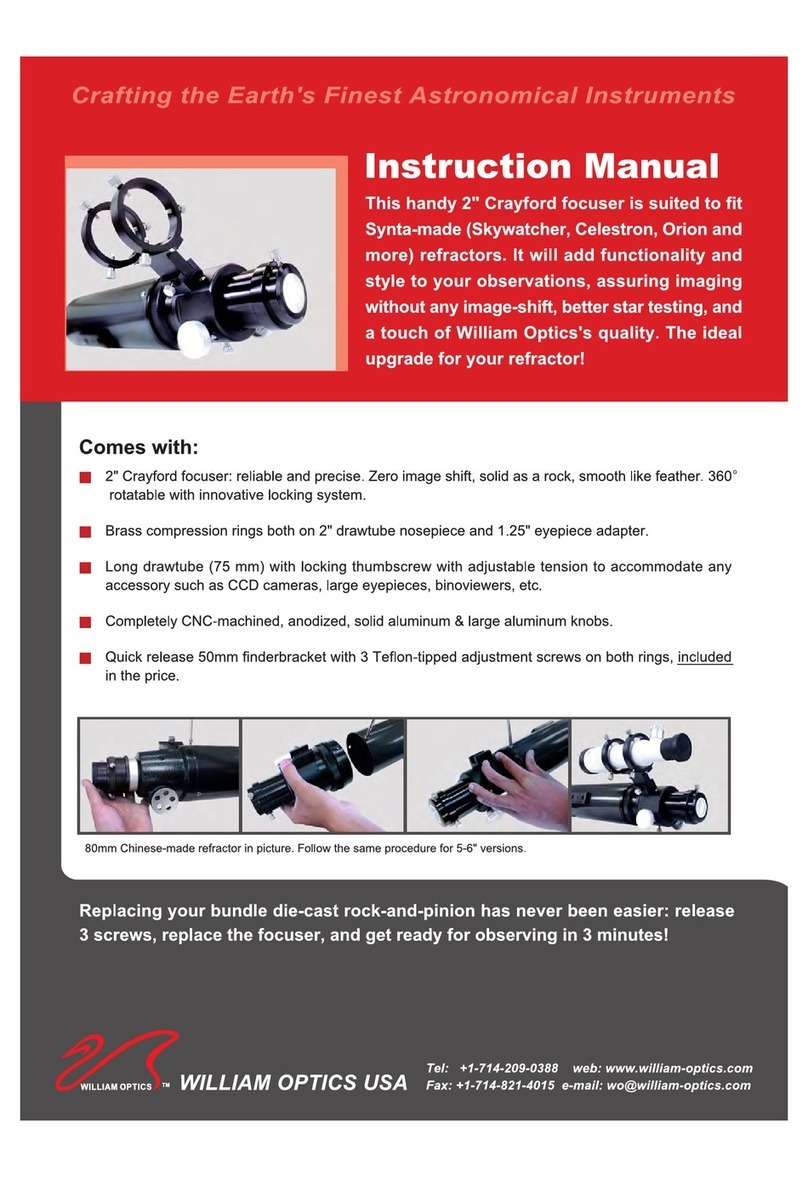
Focusing
◆Focusing System
The FOA-60Q uses a rack-and-pinion
focuser. This focuser enables the observer
to focus rapidly. Turning the focusing knob
clockwise will move the drawtube out, while
turning it counter-clockwise will move the
drawtube in.
Afte r inser t ing an e yepi e ce int o t he
telescope, it is necessary to achieve
the best possible focus. Remember that
the atmosphere will limit the highest
magnification that can be used on any
given night. Using the lowest power
eyepiece, focus the image and increase
the magnification by using shorter and
shorter focal length eyepieces until the
desired magnification is reached. This
procedure allows the centering of an object
at high magnification. Please familiarize
yourself with the following items so that
you can always get the best focus in your
observation.
Drawtube
Drawtube Clamp
Focusing Knob
Drawtube will be moved out by
turning the knob this direction.
◆Focusing Process
Remove the dew shield cap and the
eyepiece adapter cap. Insert the diagonal
prism into the compression ring adapter.
Carefully tighten the compression ring until
it begins to make contact with the barrel
of the diagonal prism. It is not necessary
to overtighten the ring to hold the diagonal
prism.Then insert the eyepiece into the
compression ring of the diagonal prism,
repeating previous process. Be careful not
to overtighten the compression ring.
Begin the focusing process by choosing a
bright star in a convenient position of the
sky. When you think that you have achieved
the best focus, move the focuser inside and
outside of what you think is the best focus.
This will conrm the critical procedure.
Begin with a low power eyepiece and then
proceed higher and higher until the desired
magnication has been achieved.
When the best focus at high magnification
has been achieved, the observer may notice
a bright and dim ring around the star. This is
not a defect but rather a diffraction pattern
which is an indication of the diffraction
limited optics.
◆Drawtube Clamp
The drawtube clamp is provided to lock the
drawtube when the best focus is achieved.
In visual observation, clamping the drawtube
is not necessary, but in astro-imaging, the
drawtube will move when a heavy package
is attached so it is necessary to firmly
clamp the focuser to keep the package from
moving and spoiling the image. Don't forget
to loosen the clamp when finished to help
prevent damage to the gears.

